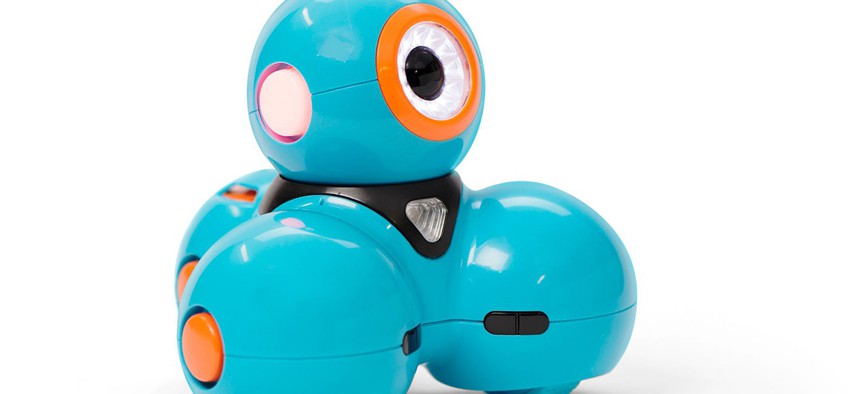The New Robot Teaching Kids How to Code

Dash the robot Wonder Workshop
It works for adults, too.
Pretty much as with any other language, learning to code seems to get increasingly difficult the older you are—for every app or startup idea that you’ve had over the years that went unrealized, you may consider starting your children on coding earlier. A new game sets out to do just that: Two little robots called Dash and Dot, from toymaker Wonder Workshop, are designed to teach kids the fundamentals of coding, through play. Just in time for the holidays.
Wonder’s founder, Vikas Gupta, was formerly the head of consumer payments at Google. He left the company in 2012, and after spending time with his two children, realized there weren’t enough toys that taught his kids to be curious and creative, that were also fun. So he built them a robot.
Most of the robots that we know—on the factory line, on the front line, or in the pipeline—are a bit unsettling.
“The industry builds very industrial robots,” Gupta tells Quartz. “They’re very aggressive.”
Gupta wanted to soften that perception, and create something more toylike, which may explain why Dash and Dot bear close resemblance to a seemingly ubiquitous group of cartoon movie characters.
Unlike most educational toys, where whimsy tends to be rammed in as an afterthought, Dash and Dot actually feel fun, even to someone who’s not so much of a kid anymore. Both toys work with a mobile device, or on their own. Without a smartphone or tablet, kids can play a range of games, including a Simon Says-style memory game, and a Magic-8-Ball fortune telling game. The two robots can even recognize and interact with each other.

But the real magic happens when the robots are controlled by a mobile device. Wonder created an accompanying app meant to entice children to learn how Dash and Dot were created: Behind the cartoon cutscenes is a challenge-based game designed to show kids how programming works.
Each level shows a bit more about the concepts of programming—you can make Dash or Dot say something, or make Dash say something to Dot after it has wandered around the room looking for Dot.
“Each level has visual cues on how to program it,” Gupta said, adding there are hundreds of levels already loaded into the app, with more to come.
Dash and Dot are meant for young children (although the box says “Ages 5 to ∞”), so Gupta says for now at least, the actual code behind what kids are doing in the app won’t be available for them to check out. But Gupta says he wants to get kids thinking at an early age about how things in the digital age actually work.
And although I’m not the target demographic, I liked building little programs to make Dash and Dot terrorize my coworkers, or annoy my roommates. I liked being able to take a broad view on my programs, seeing how every step would unfold—something that is often lost in laymen looking at a text-based programming language. While I’m not entirely convinced that a five-year-old would be able to appreciate the coding aspect of Dash and Dot yet, Gupta said it’s a toy that’s meant to grow with kids.
Wonder has released a bunch of add-ons for the robots, like connectors that let kids build programmable LEGO structures on top of Dash. Gupta showed me how to use Dash to fire little projectiles at someone, which will be a surefire hit with kids looking to terrorize their siblings or parents.
The accessories can get more complex as the child grows up, as will the programming.
“If a parent is going to spend $150 on this, I’d love it to last for years,” says Gupta.
Dash costs $150 on his own, which seems to be the going rate for robot toys. Bundled with the much smaller Dot, the pair cost $200 together. Either way, if you’re looking for a holiday present that’s actually fun and might teach someone something, this would be a worthy choice.





